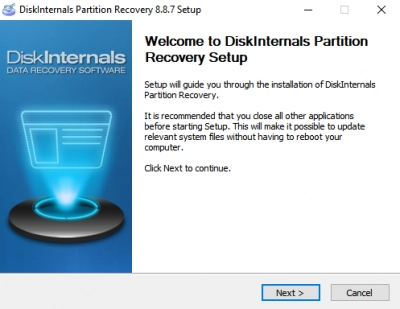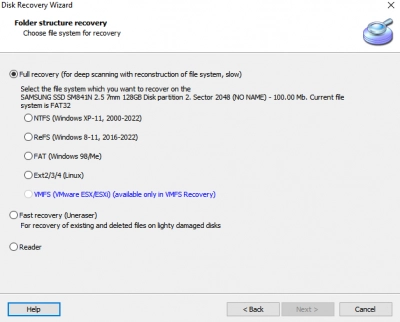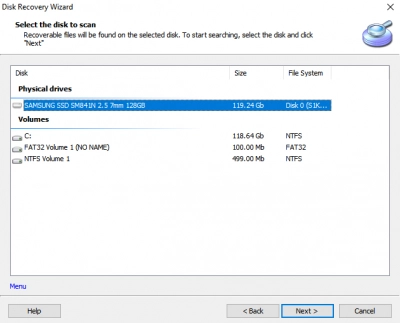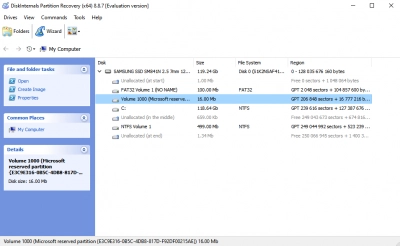Is my SSD dead?
SSD have become very popular among PC users due to their impeccable advantage over HDDs. But just like HDD, solid-state drives (SSD) can fail, and your data/files saved on the drive could go missing. But notwithstanding, you can recover files from problematic SSD using Partition Recovery tool.
Is your SSD dead? Well, maybe it is. When your SSD starts showing certain signs, it could imply that the drive is about to fail. So, it is important that you know SSD failure signs, which will make you act fast when the drive starts to fail, to keep your files safe.
Tip: recover data partition with ease!How to Know if Your SSD is Dead?
SSDs are technically more advanced than HDDs, featuring no moving mechanical parts that could produce noise when the drive fails, a common issue with HDDs.
To quickly determine whether your SSD is still functional, you can remove it from your current computer and attach it to a different one. If the second computer can read the drive, then your SSD isn't dead. To confirm this further, you could try connecting the SSD to additional computers to see if the issue might be with your original computer rather than the drive itself.
How Long Do SSDs Typically Last?
There's no one-size-fits-all answer to the lifespan of an SSD, as longevity is influenced by usage and environmental conditions. However, under typical circumstances, an SSD can be expected to last between 10 and 15 years. Proper maintenance can even extend this lifespan. Factors that can reduce an SSD's longevity include overheating, physical damage, and malware infections.
Signs Your SSD May Be Failing
When you begin to notice the following symptoms, it's a good idea to backup all essential files and data stored on your SSD, as these signs often precede failure. It's especially crucial to act swiftly since recovering data from a failed or dead SSD is particularly challenging. Keep an eye out for these warning signals:
- Periodic computer freezes while attempting to access files stored on the SSD.
- Frequent, unexplained computer restarts when the SSD is connected (assuming it's not the primary storage device).
- Inability to boot your computer because the operating system files on the SSD are inaccessible.
- Sudden failure of your computer to recognize the SSD when connected as an external storage device.
On macOS
Mac come with a built-in utility that helps the owners monitor their SSD performance. This built-in macOS SSD monitoring utility is called the SMART tool (Self-Monitoring, Analysis, and Reporting Technology) – it provides details on the primary SSD storage on your mac, so you can easily know when it's starting to fail. Actually, what the SMART tool does is to monitor your SSD's health status in real time.
On Windows Computers
Unlike Mac, Windows computers do not have a built-in tool that monitors SSD health and report it in real time. However, there are third-party Windows OS software applications that can help with such functions. Notwithstanding, the easy ways to spot a failing SSD on a Windows computer are the methods explained earlier, which include the PC not being able to boot because the OS files on the SSD cannot be read.
How to Test if SSD is Dead?
A completely dead SSD will make data recovery almost impossible because it cannot be recognized by any computer system it is connected to. SSD are highly technical; you have to be fast in action to be able to recover lost files from them whenever you're faced with an SSD data loss scenario.
To test if an SSD is dead, remove it from the computer or Mac it serves as the primary storage, then connect it as an external drive on another computer. If the system recognizes it as an external drive, try saving a new file or copying out a file from the SSD and see if the process will run completely. If the process is completed, the drive is not completely dead but may not be able to serve as a primary drive with OS installed.
In this case, you will have to install a data recovery software and backup/recover your files from the failing SSD, then format the drive to use it as an external drive. In contrast, if the SSD doesn't allow for read/write even as an external drive, it implies that the drive is completely dead.
What can Cause your SSD to Fail?
An SSD may fail due to quite many reasons, but hereunder are the most common ones that are relatable.
- 1. Physical Damage: if the drive falls to the ground and sustains physical scratches, which could lead to its failure and subsequently cause the drive to die.
- 2. Overheating: Excessive heat can cause any storage drive to fail. You should ensure that your PC doesn't always overheat; if possible, get a laptop stand so you would stop placing the laptop directly on top of the bed, table, or cushion.
- 3. Firmware Issues: It is important to regularly update your SSD's drivers and firmware; you could set them on automatic updates so you don't have to do that manually. Firmware issues are among the leading causes of SSD failure.
- 4. Components Failure: Apparently, if any of the components that make up your SSD fails, the drive itself would follow suit. An SSD device comprises a number of components that could be affected by power surges or short circuits.
Can you Revive a Failed/Dead SSD?
Well, it all depends on various factors, such as the cause of the SSD failure, the state of the TRIM command, and the type of recovery method used. Some computers can still read a dead SSD but as an external drive. As long as the SSD is not physically damaged, it can be revived as an external drive, but nothing can be done if it is physically damaged.
Can you Retrieve Data From a Dead/Failed SSD?
SSD data recovery software apps can be used to attempt the recovery on a dead SSD device. DiskInternals Partition Recovery is a professional software tool capable of reading problematic HDD and SSD and helping you to recover data from such drives. It works on all Windows computers and supports all known file system formats for Linux, Mac, and Windows.
DiskInternals Partition Recovery works to recover lost files irrespective of the data loss scenario, and it is very fast. The interface is intuitive, and it features a built-in Recovery Wizard that guides the user throughout the recovery process. This data recovery software works for retrieving data from internal and external SSDs or HDDs. Here's a guide to using Partition Recovery.

- Step One: Download and install DiskInternals Partition Recovery on your Windows PC. Connect the SSD drive to the same computer you installed the software, then launch the DiskInternals Partition Recovery software.

- Step Two: Select the SSD from the list of connected drives on your computer, and choose between the three scanning modes. Fast Recovery (Quick Scan) mode may not get back all the files you want, but it is very fast and recovers a good number of lost files. If you want to get back everything and also repair the SSD, use Full Recovery (Deep Scan) mode and wait for the scan to run completely – it may take some time.

- Step Three: Once the scan is complete, the recovered files will be marked with a red asterisk, so you can easily differentiate between files that are still saved on the SSD and the ones that were just recovered by DiskInternals Partition Recovery. Click on the recovered files and preview them to ensure they're in good condition and equally the ones you needed back.

Note: To resave the recovered files, you need to purchase the DiskInternals Partition Recovery license.
Conclusion
This article has clearly explained how to know if an SSD is dead and how you can try to retrieve your data and files from a dead SSD. Apparently, DiskInternals Partition Recovery is the go-to data recovery for experts and newbies, thanks to its intuitive interface and built-in recovery wizard – plus support for multiple file systems used by Windows, Linux, and macOS systems.
